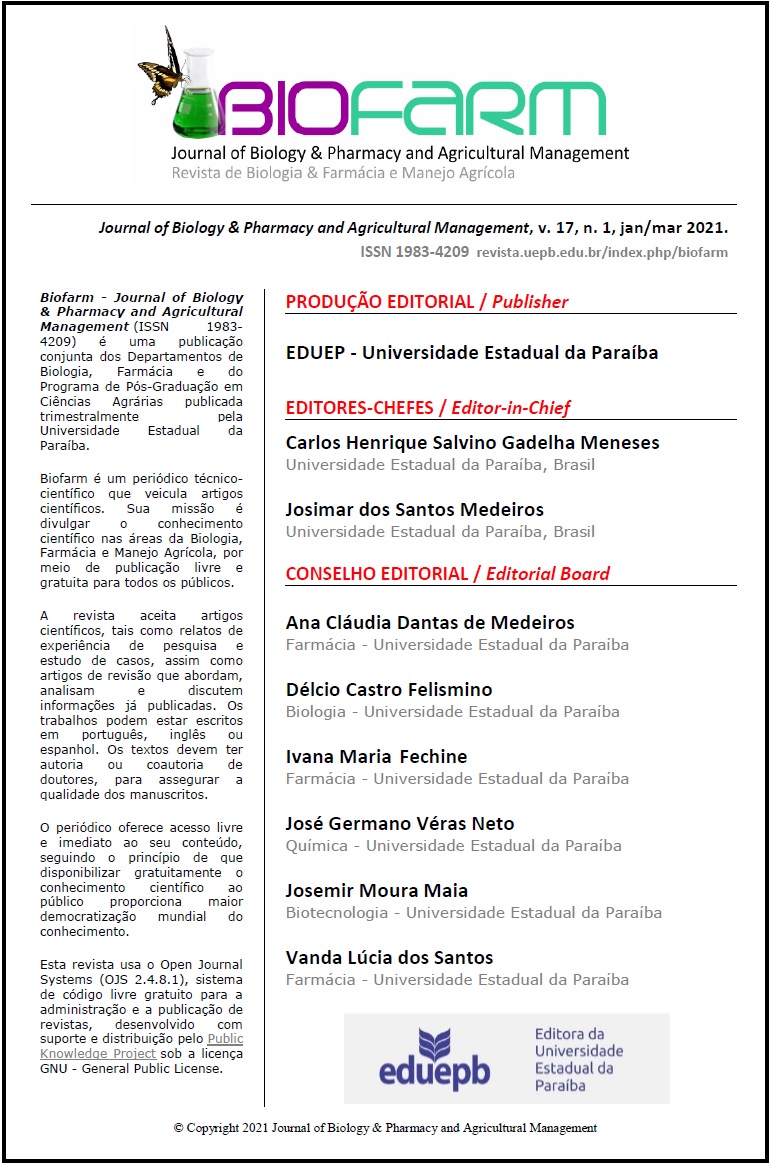FÁRMACOS HEPATOTÓXICOS E HEPATOPROTETORES:
UMA REVISÃO DE LITERATURA
Resumo
Apesar dos efeitos benéficos com finalidades profiláticas e curativas, os fármacos podem causar reações prejudiciais aos indivíduos. O objetivo deste trabalho foi descrever os principais fármacos responsáveis por reações hepatotóxicas, os hepatoprotetores e as formas de avaliação da função hepática. O presente estudo trata-se de uma revisão integrativa da literatura. A pesquisa foi realizada em base de dados eletrônicos, publicados durante os últimos cinco anos. Os principais fármacos responsáveis por causar hepatotoxicidade encontrados foram: paracetamol, nimesulida, diclofenaco, amoxicilina + clavulanato, rifampicina, itraconazol, carbamazepina, ácido valproico e metrotexato, agindo por mecanismos diretos ou idiossincráticos. Os principais hepatoprotetores descrito na literatura foram: betaína, colina, L-ornitina, metionina, vitamina B6 e os fitoterápicos a base de Centella asiatica (Linn) Urban, Calotropis procera (Aiton) W. T. Ainton, Silybum marianum (L.), Curcuma longa L. Além disso, os fármacos podem ativar e inibir enzimas do fígado, bem como as funções hepáticas podem ser avaliadas por dosagens sanguíneas de enzimas do fígado, bilirrubina total e direta e albumina sérica. Contudo, é importante avaliar o fígado durante um tratamento farmacológico, por ser um órgão essencial para a homeostase corporal.
Downloads
Publicado
Como Citar
Edição
Seção
Licença
Copyright (c) 2023 BIOFARM - Journal of Biology & Pharmacy and Agricultural Management

Este trabalho está licenciado sob uma licença Creative Commons Attribution 4.0 International License.
Authors and co-authors retain copyright, but cede the right to first publication to the Journal of Biology & Pharmacy and Agricultural Management (BIOFARM).
Copyright encompasses exclusive rights to reproduce and deliver the article in all form and media, including reprints, photographs, microfilms and any other similar reproductions, as well as translations. The reproduction of any part of this journal, its storage in databases and its transmission by any form or media - such as electronic, electrostatic and mechanical copies, photocopies, recordings, magnetic media, etc. - will be allowed only with a written permission from the BIOFARM.
Articles published in BIOFARM will be Open-Access articles distributed under the terms and conditions of the Creative Commons Attribution License (CC BY). The copyright is retained by the author(s). BIOFARM will insert the following note at the end of the published text:
© 2023 by the authors; licensee BIOFARM, Campina Grande, Brazil. This article is an open access article distributed under the terms and conditions of the Creative Commons Attribution License (http://creativecommons.org/licenses/by/4.0/).


